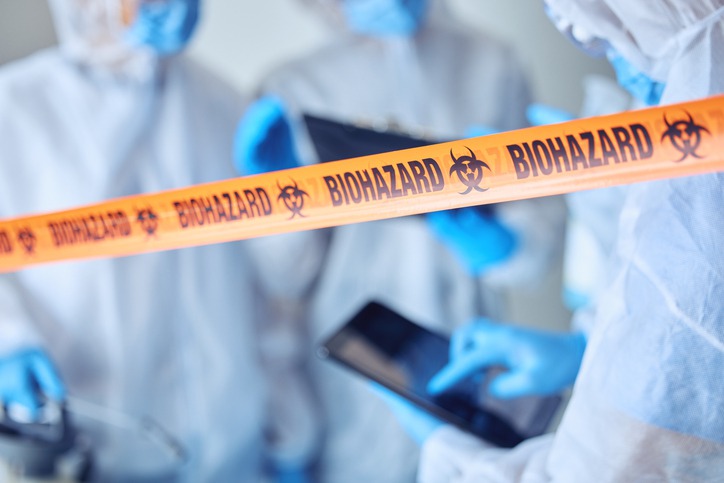Biohazard removal is a specialized field that requires careful handling and disposal of potentially dangerous materials. Whether it’s managing infectious waste or chemical hazards, biohazard teams have a critical role in maintaining public safety. Let’s explore how these experts manage contaminated materials effectively and safely.
What Are Biohazards?
Before diving into the process of handling biohazards, it helps to know what biohazards are. These are biological substances that pose a threat to human health and the environment. They can include bacteria, viruses, medical waste, and even certain chemicals.
Types of Biohazardous Materials
Here’s a quick look at some common biohazardous materials:
-
Bloodborne pathogens
-
Medical waste
-
Microbiological waste
-
Animal waste
-
Chemical hazards
Steps to Safe Handling of Biohazardous Materials
Biohazard teams follow strict protocols to ensure safety when dealing with dangerous materials. Here’s how they do it:
Assessment and Planning
Assessing the situation is always the first step. The team evaluates the type and extent of contamination to determine the appropriate response. This involves identifying the biohazard type and planning the safest and most efficient cleanup methods. Planning ensures everyone understands their role in the cleanup process to maintain safety and efficiency.
Use of Personal Protective Equipment
Personal protective equipment (PPE) is crucial in this line of work. This gear might include gloves, masks, goggles, and full-body suits, depending on the hazard level. PPE shields team members from exposure to harmful materials, minimizing health risks. The appropriate use of PPE is essential for safety during contamination handling.
Containment of Contaminated Materials
One of the key strategies is containing the hazardous material to prevent further spread. This might involve sealing off an area or using specific containers designed for contaminated waste. Proper containment ensures that the biohazard remains isolated, protecting both people and the environment. It is an essential step in the entire cleanup process.
Proper Disposal Procedures
Once contained, biohazardous waste needs to be disposed of following stringent guidelines. This could involve special disposal units or facilities equipped to handle such waste safely.
Different Disposal Methods
-
Incineration for non-recyclable items
-
Autoclaving to sterilize certain waste
-
Specialized landfills for chemical materials
Ensuring Public and Environmental Safety
Beyond managing the immediate biohazard, maintaining safety for people and the environment is a continuous effort. Let’s look deeper into these aspects.
Monitoring and Inspection
Regular monitoring and inspection are essential components of biohazard management. They help ensure that the cleanup process is thorough and effective. After the initial cleanup, ongoing checks verify that no residual contamination remains, maintaining safety standards. This process also involves detailed documentation to serve as a reference for future actions and improvements.
Community Awareness and Education
Educating the community about biohazards and effective emergency responses is crucial for enhancing safety. Providing workshops and informational campaigns can empower residents to protect themselves and others. By raising awareness, communities become more resilient and better equipped to handle potential biohazard situations. This collective knowledge contributes to a safer environment for everyone.
The Importance of Professional Teams
Working with biohazard removal services guarantees that the process is handled by those with the expertise and equipment to do it right. This ensures compliance with legal and safety regulations and protects everyone involved.
Collaboration with Other Services
Biohazard teams often collaborate with water, fire, and property damage services to tackle the complexities of both natural and man-made disasters. This partnership allows for a comprehensive approach, ensuring all aspects of damage and contamination are addressed efficiently. By pooling their expertise and resources, these teams can handle everything from hazardous material cleanup to structural repairs. This collaboration not only speeds up recovery time but also ensures that safety and compliance standards are meticulously followed.
Training and Certification
Biohazard teams are trained rigorously to handle different types of hazardous situations. Certification ensures they understand best practices and adhere to the necessary legal requirements.
Regular Training Sessions
Regular training is essential for biohazard teams to stay current with the latest techniques and technologies. It ensures that they are well-equipped with the most advanced protective gear and are proficient in updated waste disposal methods. Training sessions often cover new protocols and safety measures, allowing teams to respond effectively to various hazards. This continuous education not only enhances their skills but also reinforces their commitment to safety and compliance.
Certifications for Biohazard Professionals
-
OSHA Certification
-
HAZWOPER Certification
-
Specialized workshops for new biohazard threats
Challenges and Solutions
Handling biohazards is no simple task, and teams often face challenges such as logistical hurdles, public fear, or technological limitations. But they’re equipped with strategies to overcome these issues, ensuring the job gets done safely.
Overcoming Logistical Challenges
Biohazard teams often face challenges like accessing remote areas or managing large-scale cleanups. They rely on detailed planning and efficient resource management to tackle these difficulties effectively. When dealing with fire incidents, it’s crucial to hire experts who understand the complexities involved. By engaging a professional fire damage restoration service, you ensure that the necessary tools and insights are applied to restore properties efficiently and safely.
Wrapping Up
Biohazard teams play an essential role in keeping us safe from unseen dangers. Their expertise, combined with rigorous protocols, makes sure contaminated materials are handled in ways that protect us all. Engaging with these services not only ensures safe disposal but also contributes to a safer, healthier community.
